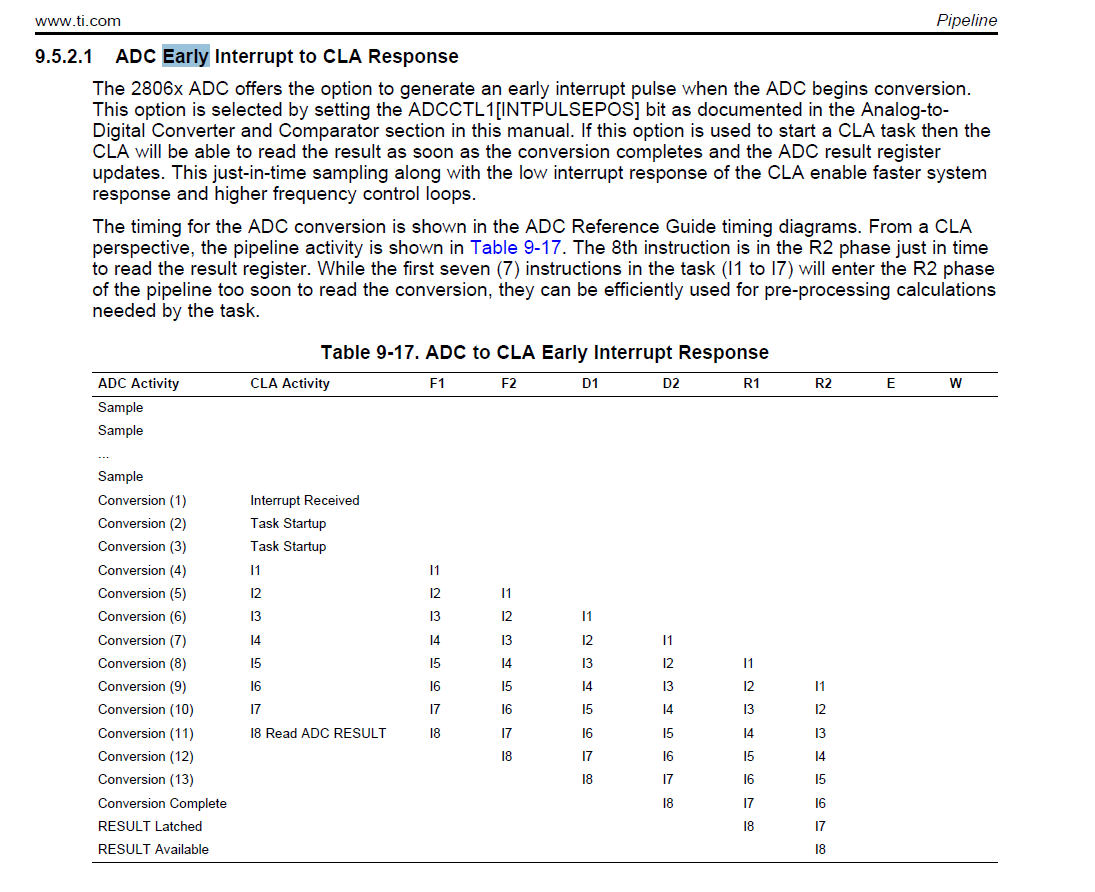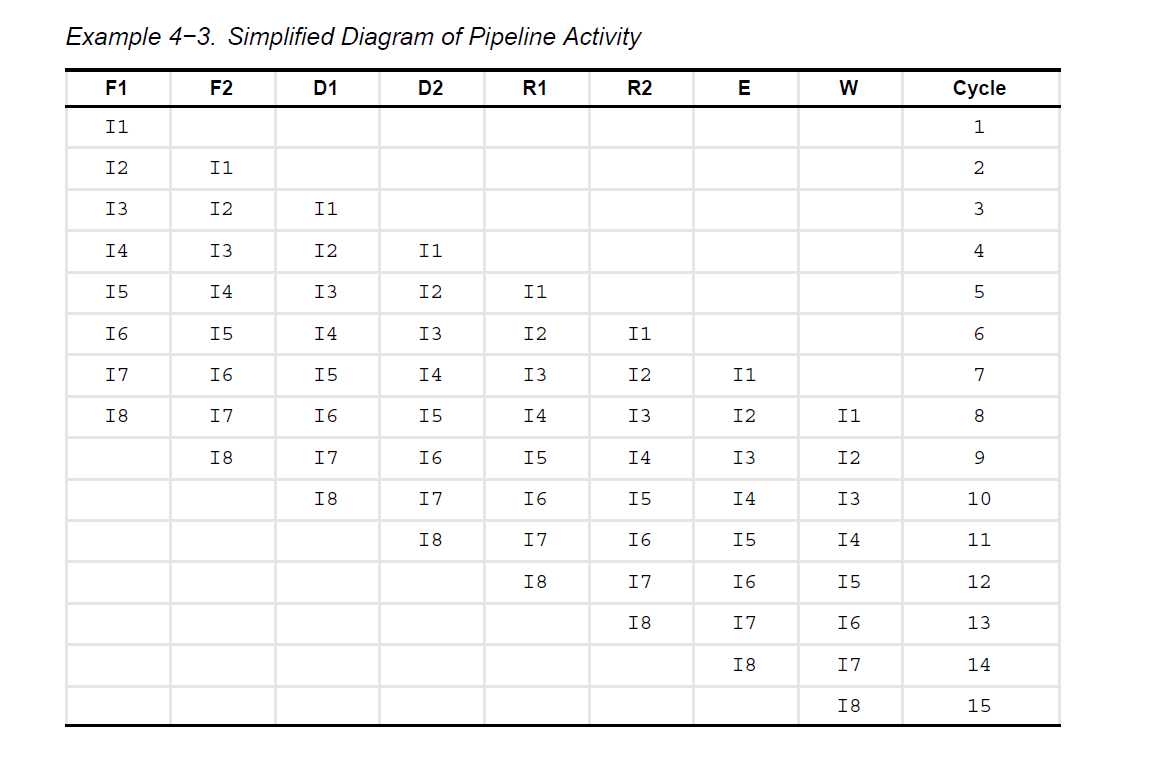hi,
I am learning the piccolo series DSC with F28069 and working on the ADC temperature sensor conversion functions.
In the example, the completion of ADC sampling is judged by EOCx INT pulse and as shown below.
//Wait for end of conversion.
while(AdcRegs.ADCINTFLG.bit.ADCINT1 == 0){} //Wait for ADCINT1
AdcRegs.ADCINTFLGCLR.bit.ADCINT1 = 1; //Clear ADCINT1
But I looked at the ADC timing and found that the int pulse occurs much earlier than the point that the result is latched.
So how can I make sure that the result I read from AdcResult register is correct?
I know the timing of pipelining may solve my puzzle but I can not find useful materials.
I am looking forward to your kind help.
thanks and regards
Di





